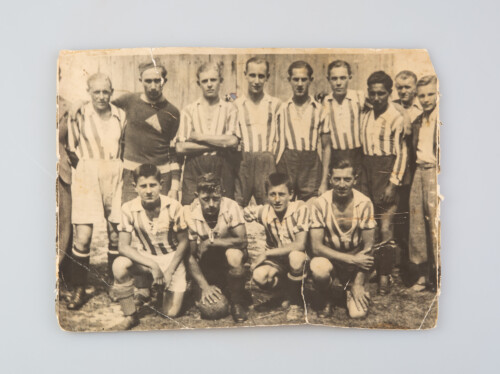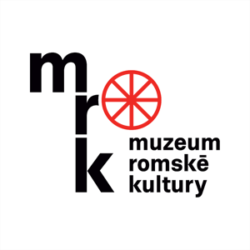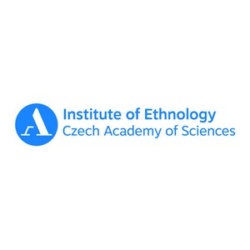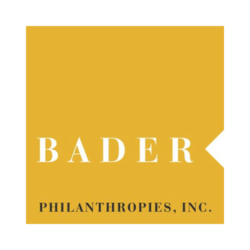
František Daniel
František Daniel, born 1921, Chvalkovice na Hané, today part of the village of Ivanovice na Hané in the Vyškov district
-
Testimony abstract
František Daniel’s father, Jan Daniel, was born in 1888. He was apprenticed near Vyškov and became the village blacksmith at Chvalkovice. The village built him a one-room house, which his father divided, using one part as a simple forge in which he had a bellows inherited from his ancestors. He was renowned for his skill as a blacksmith, making, for example, chains and metal fittings. He also had commissions from builders, making, for example, nuts for the railways. František Daniel's mother, Marie Danielová, was born as Daňhelová also in 1888 at Svatobořice; her mother came from the Holomek family. She was said to be pretty, fair-skinned and fair-haired, and she was also liked by the peasants whom she came to help in the fields. She knew how to keep order – she said that when the Vlachs [Olachian Roma (ed.)] came, for example, she asked them not to disgrace them.
František Daniel had eleven siblings, nine of them probably his sisters. In 1915 Rozálie was born in Nový Rousínov, Marie known as Máňa was born in 1922, sister Štěpka known as Štefka/Štefina died before the war from postpartum tuberculosis.The youngest of the sisters was called Mila.
From the age of five or six, František Daniel helped his father to blow the bellows. In the winter of 1928, the municipality, headed by the vice-mayor Zetka, sent him to a juvenile detention centre in Moravský Krumlov because, in his own words, he was “a scoundrel”. While there he completed primary education and was later apprenticed as a blacksmith. He stayed in the institution for ten years and never saw any of his family. Only once, after the death of his sister Štěpka, was he visited by his brother-in-law Ruda, who came from the district of Brno known as the Boneworks (Kostivárna); he said he gave him seven hundred crowns and shortly afterwards died from poisoning. After his apprenticeship, he did as his parents wished and returned to Chvalkovice, although he did not want to go back to the poverty of his origins. He gave most of the money he had saved to his father, who used it to buy a cow, new equipment and pots.
By 1938 he had earned sixteen thousand crowns, most of which he gave to his parents and siblings. He also remembers the Roma from Strážnice, whose children were lighter-skinned. They went around dressed in local costume like the other villagers, attended church, and, he says, fitted in with the gadje. At the same time, he says that in those days it was impossible for a Roma person not to have what was called a Gypsy identity card; their family had one, too, even though they had lived in Chvalkovice for as long as anyone could remember.
In 1941 or 1942, the municipalities were supposed to select people to be transported,[1] and according to Daniel in Moravia they were mostly Romani people. The Daniels were the only Roma family in Chvalkovice, so they took František’s father and two brothers-in-law to the headquarters in Brno.So they went to a Czech Roma named Nový[2] begging him to get their father released as he supposedly had a great deal of influence, but he did not arrange anything and they were afraid they would be kept there too. Within six weeks their father was sent to Auschwitz, and two months later a telegram arrived saying he had died. František Daniel could not believe it and headed to Poland to help his father escape. He was shocked at how things were in Auschwitz. He was caught on the spot and imprisoned for three months for illegally crossing the border, but he escaped and made it home. He had to go into hiding, however, because in 1942, after the assassination of Reinhard Heydrich, martial law was declared and a warrant was issued for František Daniel's arrest. Many Roma from Moravia, including some of his family members, were interned in Hodonín u Kunštátu at that time, but his mother and sister were free. Sister Rozálie was released from the camp after she gave some gold to a Czech camp supervisor named Zajíc in Vyškov. Besides him, the camp was run by a German citizen he called “Herz” [Franz Herzig (ed.)]. Later, his sister was again taken to the camp,[3] but, like Daniel's brother-in-law she was not marked with the Z symbol.[4] When František came home one day, there was an officer of the local police with some German policemen. They had taken František’s sister and mother and were intending to shoot them just outside Ivanovice, but he came and asked them to take him instead. They took him to the police headquarters in Brno. He stole a French gold watch from one of the men who was in the cell with him for one night for being drunk, and three months later he used it to bribe Zajíc to be taken from Brno to his family in Hodonín u Kunštátu. He used to watch the transport of women and children from the window of the headquarters, and later learned that they were being taken to Auschwitz. The remaining group of about thirty Roma from Ivančice and Oslavany were interned in the Hodonín camp along with František Daniel.
After arriving at the camp, [Miroslav] Wyroba, who was known for greeting every new prisoner with a slap, entered his name in a book. Zajic, however, defended Daniel, saying that he was intelligent and educated. There were separate blocks for single prisoners and for married prisoners with children in the camp. At first whole families were in one bunk, but later they put the women and men separately and the two sections were separated by a barrier which closed around nine o'clock.[5] In the third block were the cobblers, and below that was the sick bay, which came under Wyroba’s care. The whole camp was built on a gentle slope, the guard towers being on the upper edge. If any of the men lingered on the block with his wife, he could expect to be kicked and beaten. Next to block number 1 were covered wagons and carts without wheels belonging to nomadic Roma. The sick were kept in these, but no one came to them except when the prisoners needed to be counted. He says that they were dying of misery, hunger and suffering.
On Saturdays there used to be an inspection, known as the “cleanliness”. If the kapos found lice on someone, they got a beating. Daniel once asked Wyroba, who supposedly liked him because he could read and write, if the kapos were also inspected. Next time they found lice on Slávek Daniel, who also got a beating.
They got up around 5:30 in the camp, and at 6:00 they were given black coffee for breakfast, and sometimes white coffee for the children and the sick. They also had sauces, of which the best was horse meat and sometimes canned pork, but sometimes there were worms in it, so one had to be careful. Dinner was at around seven or eight o'clock and for that they had things like groats. The food in the camp was sub-standard and certainly not nutritious, so if some of the Roma in the camp had money or jewellery, they would give it to Daniel,[6] for him to bring them bread and cigarettes in return. There was also a black market in the camp with food and cigarettes brought in by relatives. Prisoners who had money with them could buy from Wyroba and he would deduct the amount from their account – a loaf of bread was reportedly seventy crowns, a cigarette cost three or four crowns. The cook in the camp was Chromý, a convict who had a grudge against the Roma, and while waiting in line for food they were beaten for the slightest infraction. The single men got their food in military cups, those with families had pots, but it was checked so that no had more than one helping – this was done by cards, usually punched by Wyroba, but sometimes by Květa,[7] who helped in childbirth. František Daniel knew her from before the war, when they were friends, and he says that apparently she had a great influence on Wyroba, who was in love with her. In addition to her, another Romani nurse, Máňa [Marie Chvalkovská (ed.)], served there. Based on what the Roma prisoners who were transferred to Hodonín u Kunštátu from the camp in Lety u Písku said, František Daniel thinks that the food in Hodonín was better than in Lety. Some foodstuffs, such as cereals, flour and icing sugar, were even taken to the Lety camp from Hodonín. [Antonín] Růžička was responsible for the supply of the Hodonín camp and, together with Bohumil Daniel and another unnamed person [probably Tomáš Ondráš Růžička (ed.)], they went to nearby Nedvědice for supplies. Růžička had a dog which he liked to let loose on the prisoners; the dog tore their clothes and bit them until they bled.
František Daniel says that he weighed ninety kilos and no one in the camp dared to touch him except Kastl from the kitchen [Pius Tastl, Austrian Roma (ed.)]. Once, when he was to be beaten for something, Wyroba told him to shout loudly while the punishment was being carried out, but he didn’t actually touch him. He also offered him a place in the infirmary. He remembers a cruel Roma guard named [Blažej] Dydy who tortured the prisoners. Once Daniel stood up for a woman who had a wooden leg. When Dydy kicked her, Daniel beat him, but then he was beaten as well; he says that he often paid for his temper when he stood up for others. He also remembers [Raimund (ed.)] Nový, who was interned in Hodonín u Kunštátu, but ended up in Berlin and was executed – according to Daniel, this was for taking bribes from people and promising to arrange for them not to be transported. The gendarmes allegedly wielded a lot of power in the camp and could get rid of anyone; for example, they broke the glasses of the prisoner Tomáš Holomek, slapped him about and sent him to Auschwitz.
The prisoners of the Hodonín camp worked eight to twelve hours a day in all weathers to build a road. They had only picks and shovels; the harder layers were blasted away and the earth and stones were then hauled away by carts.
He also talks about the good Jewish doctor [Alfred] Mílko, who was transported to Poland and whom Daniel met again in Birkenau. When typhus fever broke out in the camp, the kapos had to clear a barrack to set up a hospital there. František Daniel and Tomáš Holomek were sent there to help the sick, bring them food, keep order and remove faeces. Daniel says that he thinks they deliberately planted lice there; he saw them collecting clothes lice and woodlice in jars. New-born babies also often died in the camp because they didn't have diapers – “one after another”, he said. He attended funerals in nearby Černovice, carrying the children's coffins. At first, the dead prisoners [not only children] were buried in the cemetery there; the parish priest even dug a grave. However, when the number of deaths began to increase, Daniel said, the village became frightened of typhoid infection and therefore they began to bury the dead in a pit behind the camp. When someone died, they put the stripped body on a table in the morgue, wrapped it in blue paper, tied it with string and carried it to the pit. Under the kitchen was a workshop where a civilian employee made a wooden cross about three meters high. If the deceased belonged to a relative, his body was placed in the pit, but otherwise the dead were thrown in from left to right, earth was piled on top of them, and when the row was full, the process continued.
Once a month, people from the Brno headquarters came to the camp and selected prisoners who were very ill or disliked by the commanders, for transport to Birkenau. They gathered at the gatehouse and then the SS arrived, but the Czech authorities tried to delay the action on the grounds that the prisoners were infected with typhoid fever. In the end, about thirty prisoners remained in the camp. František Daniel was kept with his sister Máňa, but Wyroba sent him and Holomek to bed, where they had to pretend that they could not be transported; he therefore had to be separated from his sister. Máňa eventually went to Birkenau, where the Roma from Hodonín lived in block 9. The remaining prisoners stayed in Hodonín for a month to clean the camp. The food was already better then, they had enough to eat. Half the Roma were eventually released and the others were taken to the workhouse in Brno, where other Roma from Moravia were brought. František Daniel was sent to Birkenau on 28 January 1944 in the last Roma mass transport from the Protectorate. He says that it was hell – it was raining and people were crying – and they were handed over to the SS at the border. He was in Buchenwald from April to May 1944 and then he was put to work in the Dora-Mittelbau camp.
Her parents and seven sisters did not survive the war, including the youngest, Mila, who died with her son, who was less than one-year-old.
- [1] Presumably people considered to be asocials. (ed.)
- [2] Raimund, who had a liking for the occupiers. (ed.)
- [3] In 1943 she was transported to the Auschwitz I camp for what were called asocials, and a year later to Ravensbrück.
- [4] Denoting “Zigeuner” - a term for gypsies, gypsy mixes and persons living a gypsy lifestyle.
- [5] In October 1942, two more old wooden barracks were opened, the smaller one for the prisoners, the other smaller one was used as isolation from December 1942 onwards; and at the beginning of the following year, two more accommodation blocks were opened. (ed.)
- [6] Bohumil; he was in charge of the stables and the horses, which he took outside the camp to get food. (ed.)
- [7] Marie Ondrášová, a Romani camp nurse. (ed.) See her memoir in the database.
František Daniel survived the war together with his sister Rozálie. He met his first wife, Hermína called Jarka or Jarina, née Holomková, in the Hodonín camp. She was, among other things, a cousin of the lawyer Tomáš Holomek. His second marriage was to Margita, née Gáborová. He had twelve children. He cooperated for a long time with the Museum of Romani Culture in Brno.
How to cite abstract
Abstract of testimony from: HORVÁTHOVÁ, Jana a kol. ... to jsou těžké vzpomínky. 1. svazek. Vzpomínky Romů a Sintů na život před válkou a v protektorátu. Brno: Větrné mlýny, Muzeum romské kultury, 2021, 146-147, 159-163, 307-308, 352-354, 373-374, 387-389, 398-399, 413-419, 437-438, 462-468, 479-480, 507, 513, 524-527, 533, 552, 557-559, 572-573, 594-597, 608-609, 624-625, 655-657. Testimonies of the Roma and Sinti. Project of the Prague Forum for Romani Histories, https://www.romatestimonies.com/testimony/frantisek-daniel-2 (accessed 11/29/2025) -
Origin of Testimony
Eight interviews with František Daniel were filmed in 1996-1997 in Brno, Pilsen, Hodonín u Kunštátu and Černovice u Kunštátu. They are complemented by an interview with the witness entitled Oral History Interview with František Daniel, which is in the collections of the United States Holocaust Memorial Museum, and two documentary films –To jsou těžké vzpomínky (These are bleak memories) by Monika Rychlíková from 2002 and Svědectví Františka Daniela (tragikomické vyprávění bývalého romského vězně koncentračních táborů) (The testimony of František Daniel, a tragicomic narrative of a former Romani concentration camp prisoner) by Jan Gogola Jr. from 1998. In addition, the editors used information from research reports from Brno, Hodonín and Černovice u Kunštátu in July 1996 and from Pilsen in July 2002. Another source was Jana Horváthová's publication Ma bisteren – nezapomeňme. Historie cikánského tábora v Hodoníně u Kunštátu (1942–1943) – (Let us not forget. The History of the Gypsy Camp in Hodonín u Kunštátu (1942-1943), published by the Museum of Romani Culture in Brno in 1997, and Ctibor Nečas's book Pamětní seznam II – Hodonín (Memorial List II – Hodonín), published by the National Pedagogical Museum and the J. A. Comenius Library in Prague in 2014. The memoirs are supplemented by archival photographs of the camp in Hodonín u Kunštátu, photographs of František Daniel and his football team from the 1930s, family photographs, documentary photographs from a visit to the site of the former camp in Hodonín u Kunštátu in 1998, and a portrait of František Daniel from 2020.
-
Where to find this testimony




